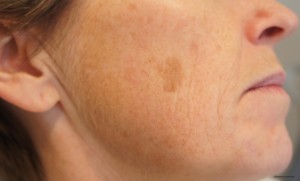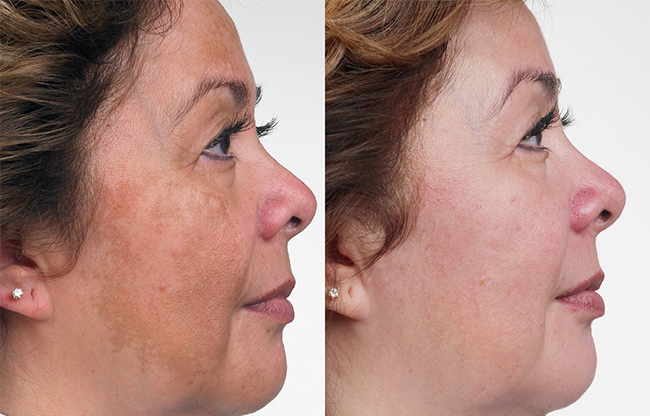
At first sight, the glow of a suntan looks like a sign of good health. However, sun damage can be a real problem, and until recently nearly impossible to reverse. Board certified plastic surgeon Dr. James Namnoum treats patients with a variety of techniques including laser skin resurfacing to improve the overall appearance of the skin. “We see a lot of patients with damage from sun exposure,” says Namnoum. “Often times they don’t even notice the brown spots, but want to know why they are looking older.”
By James Namnoum, MD
and Beverly Brooks
The Plastic Surgery Channel
 Sun Exposure and Hormones Trigger Melasma
Sun Exposure and Hormones Trigger Melasma
To protect itself from the damaging effects of the sun, skin increases production of melanin, making skin look sun-tanned. Over time, that sun-kissed glow can produce irregular coloring or pigmentation of the skin. Hormones can also trigger skin irregularities with women being far more likely than men to get melasma. Sun protection can go a long way toward preventing melasma. A daily sun protection factor (SPF) of at least 15 that contains physical blockers, such as zinc oxide and titanium dioxide, is recommended to block UV rays, but it is important to have a sunblock that also covers for UVA protection. The regular use of sun protection enhances the effectiveness of melasma treatments.
Ways to Wipe Out Brown Spots
Those with minimal damage may benefit from skincare products containing retinoids and bleaching agents. For brown spots that give the skin an uneven tone, retinoids slough them off and reduce the production of a darker pigment. Patients who may need more extensive treatment benefit from chemical peels and lasers with outstanding results. “We’re really excited about the new Halo by Sciton,” says Namnoum. “It can literally tighten up the pores and skin, making our patients look and feel better.” Chemical peels can also produce smoother, tighter, younger looking skin. The non-invasive technique resurfaces the skin’s top layers to even out pigmented skin.
Number of Treatments
When it comes to lasers or invasive type treatments, the number of treatments is determined by a patient to patient basis. In some cases three consecutive treatments will be used, with one yearly maintenance treatment. And here’s the best part: results are almost immediate! “It’s an exciting time in the world of skincare,” says Namnoum. “We are truly offering up some of the world’s best technology to our patients who initially thought they would never get that ‘youthful’ appearance back!” As always, if you are considering any type of invasive procedure, it’s best to have at least one or two consultations with a board certified plastic surgeon.


 Sun Exposure and Hormones Trigger Melasma
Sun Exposure and Hormones Trigger Melasma













Facebook
Twitter
Instagram
YouTube
RSS